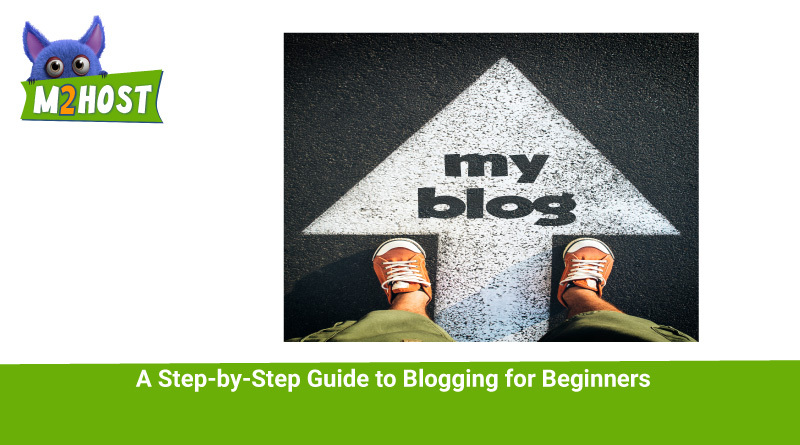It is highly recommended that you give some thought to beginning a blog because it is an excellent way to develop credibility for your company. If you are interested in documenting and sharing your passion with others, or if you are an aspiring writer or have a passion that you find interesting, a blog is a fantastic avenue for self-expression that you may utilize when you want to express yourself. To put this into perspective, before you start a blog, you need to be familiar with some strategies. Consequently, in order to provide new bloggers with comprehensive and step-by-step assistance to get them started on their journey, we have developed this guide.

This in-depth session will cover everything from locating a specific topic and establishing a blogging platform to producing content and promoting your blog. Every aspect of blogging will be covered in this discussion.
A Blog: What is it?
Blogs are websites with “posts,” which can include text, photographs, and videos. Though bloggers sometimes compose a series of blog entries that build on each other, each post has its own title and media. When a blog post is published online, readers worldwide can read and comment. You may ask why someone would expose their life, hobbies, and business with strangers online. Blogs are popular and one of the best marketing strategies because people love to read them.
Companies increasingly establish customized blogs on their websites, although blogging started popular on free platforms. These blogging platforms let you start a blog without a domain or web hosting but at a fee. You can learn how to build a blog with your own domain name and web hosting using online tools. Every blog has different designs and layouts, but they all share a few aspects. Here are the parts of every blog post:
- A title: Blog post titles can pique readers’ interest and encourage further reading. Blog names should be concise and snappy, but they should also reflect the post’s substance. A 60-character blog article title is ideal.
- Body content: After a decent title, hook readers with your post’s body content. This is where you delve into the topic with text, images, videos, charts, and other media. Body content is extremely crucial in blog posts. Keywords go here, too.
- A comments section: Visitors can leave comments on your blog article after reading it. After posting, you can reply to each remark as the blog author. Having a comments area is optional, but it helps engage your audience.
Most blogs provide a list or grid of thumbnail-imaged content. A calendar on the side of your blog may assist users to find earlier posts by date, depending on its design.
A newbie can start a blog in 12 easy steps-
- Select a topic
Start a blog by choosing a topic to write about daily. Your blog may cover a broad topic with several subtopics, but it should be something people are interested in. This is because your writing topic is more likely to interest others. Researching the most popular blogs might help you decide what to write about. This may inspire your writing. Covering a niche topic may help you grow a following, so it’s important to research your options and select a good one.
- Get a domain name
Registering your domain name is a crucial step in starting a blog. Your domain name is the URL that customers type into the address bar to reach your website. It usually ends with “.com.” If all goes well, you want a short, to-the-point URL to make entering information easier for users. Also, make sure your URL is straightforward to spell and pronounce. This lets people easily tell their friends to visit your website without confusion. Remember that registering a fantastic domain name is competitive. Consider this when choosing domain names. You will likely have to compromise on your blog’s domain name if it is not unique. This is because you may need to.
- Find the best web hosting provider
A domain name does not guarantee a website; you also need a web host. WordPress is used by most bloggers. WordPress is a website and blog platform, not a host. This underlies the scenario. WordPress web hosting solutions are available, which is wonderful. This applies to web hosting. If you’re contemplating utilizing WordPress to host your website, visit the “Hosting” page to learn about your options. Find a web host that simplifies WordPress installation and provides extensive support. Most of the time, WordPress’s suggestions work. Start investigating free web hosting companies to understand how to build a blog for free.
- Select a title
After choosing a blog topic, choose a name. Even though it may not seem like a big deal, your blog articles’ names are very similar to your blog’s name. Simply put, some visitors will choose to visit your blog based purely on its name. Although this is not true, people still choose blogs with short, distinctive, and unusual titles. You should also make sure your blog’s name is related to your organization and its topic. You should ensure this. A blog name generator may help you find a name for your platform. These name generators let you enter a few ideas and get a selection of blog names.
- Create a blog
After buying a domain name and web hosting, you can start building your blog. Whether you use your web hosting provider‘s tools or hire a web developer, adding a blog to your website will vary. Using one of the many WordPress hosting alternatives with features that simplify blog setup can make it easier. These include one-click installation and drag-and-drop. If you need help setting up your blog, check out your web hosting company’s YouTube tutorials. Choose a theme, choose a font, and handle other specifics when setting up your blog. Each work is crucial.
- Create social media accounts
Social media helps market your blog and expand its online exposure. Popular social media include Twitter, Instagram, Facebook, and TikTok. LinkedIn is a wonderful area to share professional or educational blog posts. Use social media to promote small company blog postings. Simply copy and publish the URL to your new blog post with a brief message. Your blog postings can be quickly shared on Facebook, LinkedIn, and Twitter. Tell Instagram users to click the link in your bio to visit your blog.
- Customize blog email addresses
Maintaining a blog is important, but you may not want blog notifications in your inbox. You no longer have to worry about it with your own domain and web hosting. You can build a personalized blog email address to get blog post notifications and answer reader inquiries on a more personal level. You may read your emails with any popular email service using your email address. Create many custom blog email addresses if you’re not the sole blogger. Creating email addresses is simple and a terrific method to interact with readers.
- Choose the length of your posts and the frequency of your posts
One of the most essential aspects of maintaining a blog is actually creating entries for the site. The length of your blog posts and the frequency with which you intend to publish them should be determined before you begin writing them. By doing so, you are able to maintain consistency in your blog by posting at regular intervals of approximately the same length. It is possible to construct a template for a blog post that you may use whenever you are writing new blog articles. This will allow you to achieve even greater consistency.
- Make your very first post on your blog
It is time to write your first blog post now that you have determined how frequently you will be posting and how long you would like your blog posts to be from a time perspective. Your first blog post is a significant opportunity to make a first impression, so it is crucial that you take the time to compose a piece that has been carefully considered. You have the option of beginning your blog as soon as possible with an engaging post about your area of expertise, or you can use this post to introduce yourself to your readers. Writing a strong first blog post is essential, regardless of what you decide to do.
- Apply analytics
One way to make sure you’re on track to meet your small business blog goals is to check your blog’s stats. Or maybe you want a certain number of people to sign up for your business’s email. Or maybe you want a certain number of new people to read your blog every month. With stats, you can keep an eye on how well each blog post and your blog as a whole are doing. It would be best if you also used analytics because they help you figure out what makes your blog work. If a certain kind of blog post does really well, you might want to write more of them.
- Promote and advertise your blog
It is likely that you will expand your blog by word of mouth and organic traffic to a certain extent; yet, when it comes to generating people to your website, there is no substitute for effective marketing. When you publish a new blog post, you should promptly update your social media profiles with a link to the blog post in question, along with a concise explanation of what the post is about. In every endeavor you undertake, marketing is an indispensable instrument for the purpose of expanding your audience.
Conclusion-
If you have something that you want to share with the world, starting a blog can be an effective way to effectively communicate with a huge number of people worldwide. It does not matter if you are an entrepreneur or the owner of a business; if you just follow the steps that have been explained above, you will be able to start a blog.



